Soldier Load
The Art and Science of ‘Fighting Light’
By LTC Aaron Childers and CSM Joshua Yost
Article published on: August 1, 2024, in the Fall Issue of the Infantry journal
Read Time: < 17 mins
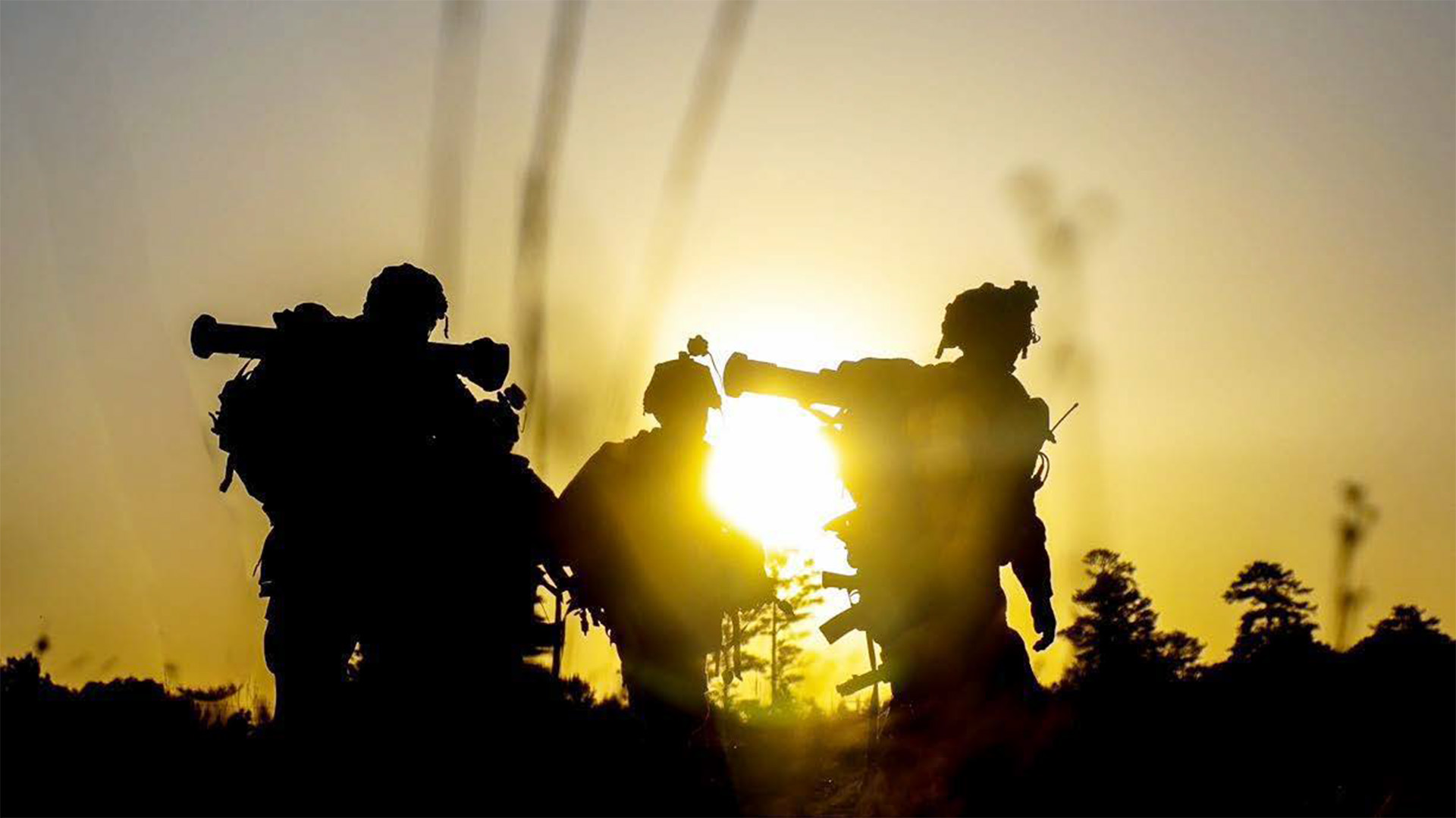
Soldiers move to their next objective during a Joint Readiness Training Center rotation at Fort Johnson, LA,
on 30 April 2023. (Photo by SPC Luis Garcia)
When it comes to Soldier load, the Army has a
weight problem... not with Soldiers but with how
much they carry. Soldiers in the Army — and
particularly those in the Infantry — carry far too much. Many
people equate Soldier load with the amount you can carry
and the length of the dismounted movement. For example,
most Infantry Soldiers think about ruck-marching standards in
terms of the Expert Infantry Badge (EIB) standard — carrying
a 35-pound ruck for 12 miles in under three hours. As part of
Joint Readiness Training Center (JRTC) Rotation 23-09, 2nd
Battalion, 30th Infantry Regiment took a different approach to
Soldier load, and this article will share some of the lessons
we learned.
Understanding Soldier load requires leaders to think differently
about dismounted movement. First, leaders need to
know what risk is associated with overloading our Soldiers.
Second, leaders need to think differently about the various
types of loads and how to tailor unit equipment loads. Third,
leaders need to consider how to train movement under load
for planning purposes. Lastly, “fighting light” requires a disciplined
approach to resupply operations. Understanding and
executing operations that minimize Soldier load are difficult
and take training to conduct successfully. Despite these challenges,
units that master this are lighter and more lethal.
The Risk Assumed and Who Owns It
Excessive Soldier load for dismounted infantry poses both
a risk to force and a risk to mission. Soldier load is often
misunderstood because leaders don’t understand who really
owns the risk trade-off of overloading Soldiers versus not
carrying something you need.
Risk to force is increased by Soldier overload. Fatigue
and poor equipment positioning can offset any advantages to
carrying everything you might need during a patrol, thereby
increasing risk to force. “Heavy loads decrease situational
awareness by tilting the head at a downward angle and
increasing the amount of weight that has to be controlled
when a Soldier stops quickly. In controlled experiments, loads
have also been demonstrated to adversely affect shooting
response times, increasing the time it takes soldiers to fire
accurately by 0.1 second, relative to unloaded conditions.”1
In addition to the risk of direct fire contact, the risk of injury,
both during the movement and long term, is compounded by
Soldier load. “Common injuries associated with prolonged
load carriage include foot blisters, stress fractures, back
strains, metatarsalgia, rucksack palsy, and knee pain.”2
Risk to mission is also increased by overloading Soldiers.
An increased load directly impacts the energy Soldiers have
available to conduct the mission once the movement is
complete. In other words, if Soldiers use all their energy on
the approach, they will be fatigued on the objective. “Loads
carried on other parts of the body result in higher energy
expenditures: each kilogram added to the foot increases
energy expenditure 7% to 10%; each kilogram added to the
thigh increases energy expenditure 4%.”3 Fatigue and its
effect on Soldier performance cannot be understated.
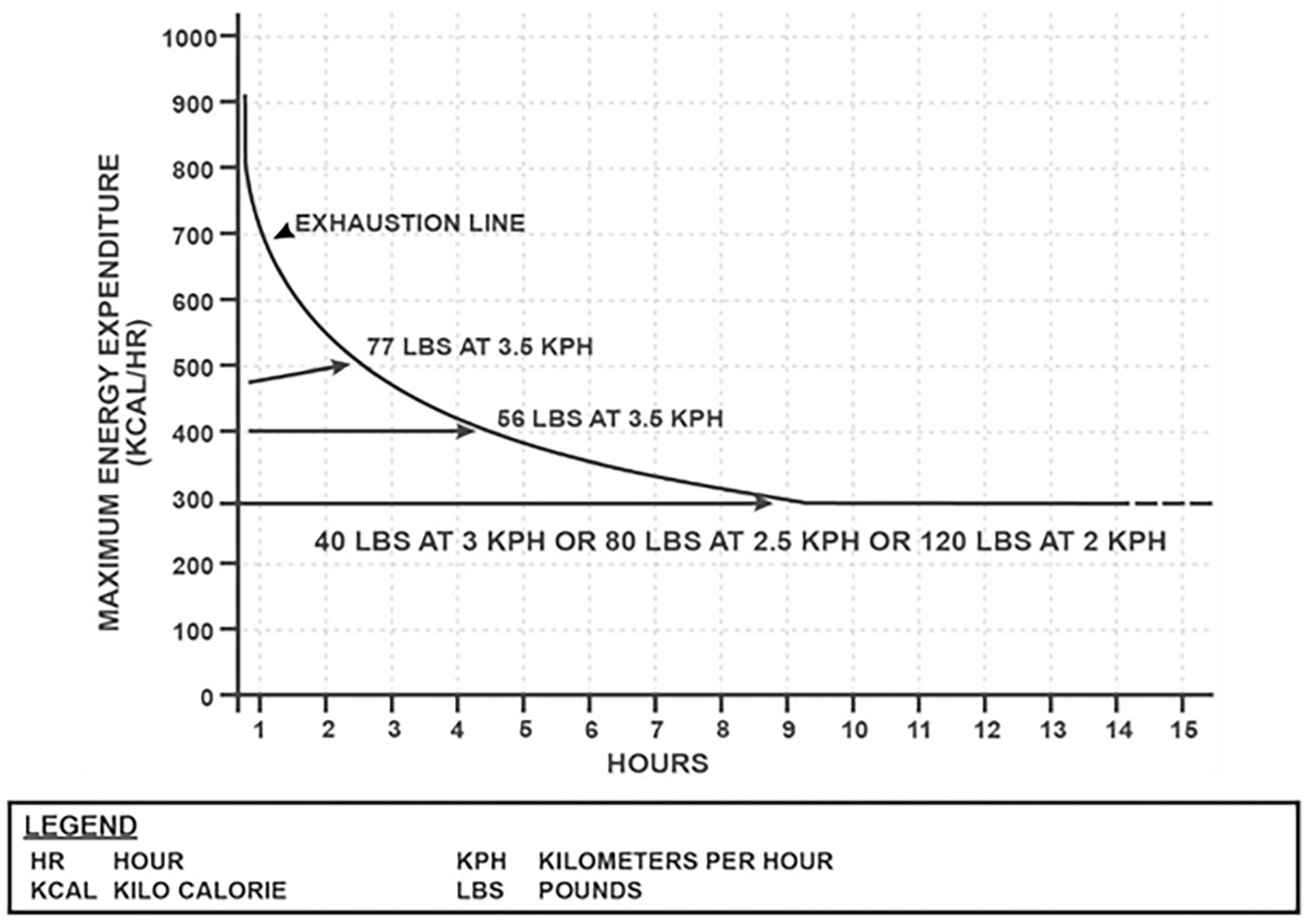
Figure 1 — Maximum Energy Expenditure (ATP 3-21.18, Figure 3-4)
The heavier the load, the less energy a Soldier has to
complete the mission. Fatigue also has a direct negative
impact on a Soldier’s ability to engage targets. In Army studies,
“the time required to determine and acquire a target increased
under heavy loads from just over 3 seconds to more than 3.5
seconds in some configurations, as accuracy decreased.”4
Soldier load impacts the mission beyond the fatigued
Soldier being less able to complete a mission and engage
a target quickly and accurately. Increased Soldier load also
increases the risk from a slower speed of movement. The
speed of movement will decrease because of both terrain
and load. The longer a unit is moving, the more it is susceptible
to enemy contact, thus increasing the risk to both force
and mission.
Soldier load impacts the mission beyond the fatigued
Soldier being less able to complete a mission and engage
a target quickly and accurately. Increased Soldier load also
increases the risk from a slower speed of movement. The
speed of movement will decrease because of both terrain
and load. The longer a unit is moving, the more it is susceptible
to enemy contact, thus increasing the risk to both force
and mission.
The senior enlisted member of the
unit is responsible for the packing
list during each training event, but
junior leaders should be empowered
to make risk-informed decisions. For
company training events, this is the
first sergeant, and for battalion training
events, it is the battalion command
sergeant major. Again, leaders at the
lowest level should feel empowered to
make decisions regarding Soldier load.
Team leaders and squad leaders are
responsible for conducting pre-combat inspections.
If left unchecked, junior Soldiers may take more than
required on a training event for fear that they may
need the item. If layouts are not conducted at the
squad and team levels, Soldiers may inadvertently
burden themselves with additional gear, especially in
the winter months.
Ultimately, the commander is responsible
overall for the risk associated with Soldier load. A
commander owns the risks to mission and force
from having too heavy a load. This risk is obvious,
especially in the summer months, so commanders
at all levels must consider Soldier load in their
planning. For battalion commanders, the military
decision-making process (MDMP) should include
Soldier load, and for company commanders, this
should occur during the troop leading procedures
(TLPs). At the company level, commanders and
first sergeants must consider Soldier load when
evaluating their own troops as part of METT-TC (mission,
enemy, terrain and weather, troops and support available,
time available, civil considerations), and Soldier load must
be revalidated during pre-combat inspections. Remember,
Soldier load INCREASES as orders go down to companies,
platoons, and squads. Leaders must remain engaged to
ensure unnecessary weight is not added.
During MDMP, Soldier load should be specifically evaluated
during Steps 2 and 6; it will be owned by the S-4, who
will maintain a running estimate of Soldier load at all times. As
part of the S-4’s assessment during mission analysis (Step
2), the S-4 will display the current weight with and without
water and food (dry weight vs. full weight). As part of courseof-
action (COA) approval (Step 6), the battalion S-4 will brief
the commander on changes to estimated Soldier load when
considering equipment added for that specific COA.
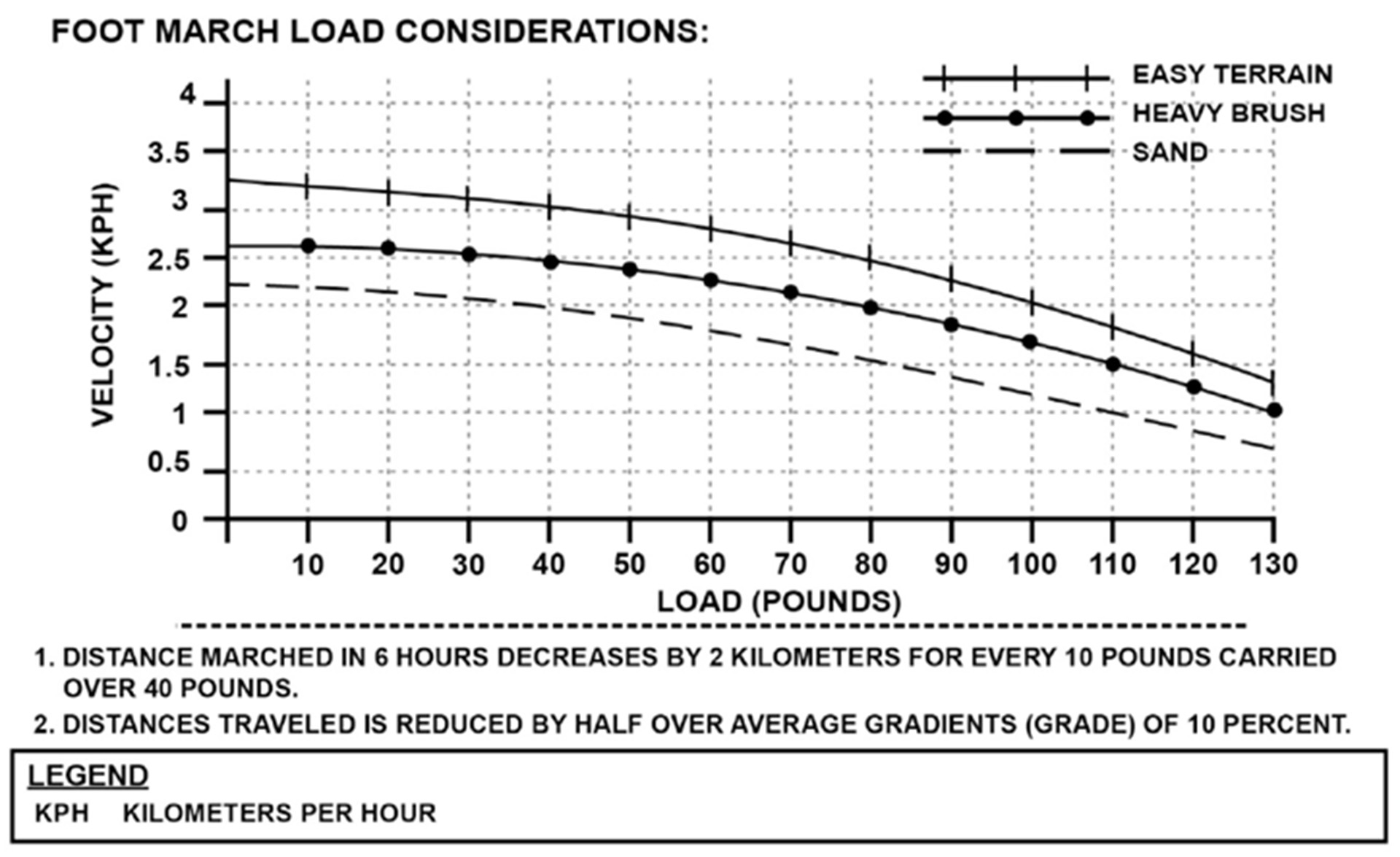
Figure 2 — March Velocity Depletion Based on Load during Cross-Country Movement (ATP 3-21.18,
Figure 3-3)
Dictating the steps of MDMP where Soldier load is
discussed may seem proscriptive, but this is essential
to ensuring leaders remain aware of what we are asking
Soldiers to carry. This responsibility does not end with
planning — it continues into execution. The staff shares
responsibility for Soldier load. The battalion S-4 must
remain cognizant of the amount of ammunition and meals
a Soldier is carrying during operations. Ammunition, water,
and meals are the heaviest items carried by Soldiers, and
staff officers must remain aware of what they are asking
Soldiers to carry. Water is not negotiable, but food and
ammunition are variables that can be controlled by the
battalion S-4. Resupply capabilities, discussed later in this
article, are ways to minimize the amount a Soldier is carrying.
Hot meals brought forward not only decrease the risk of
hot and cold weather injuries but also decrease the amount
of food a Soldier is required to carry.
| ITEM |
WORN ON PERSON |
QTY |
| 1 |
Modular Lightweight Field Load Carrier (with pouches) |
1 EA |
| 2 |
Magazines, 30-round |
7 EA |
| 3 |
Individual First Aid Kit (IFAK) |
1 EA |
| 4 |
Advanced Combat Helmet (ACH) with pads and cover |
1 EA |
| 5 |
Gloves, OCIE/RFI |
1 PR |
| 6 |
Ballistic eye protection (APEL approved) |
1 EA |
| 7 |
ID card |
1 EA |
| 8 |
ID tags with chains (long and short) |
1 SE |
| 9 |
Note-taking materia |
1 SE |
| 10 |
Flashlight with red color lens |
1 EA |
| 11 |
Hearing protection |
1 EA |
| 12 |
Watch |
1 EA |
| 13 |
M4 Blank Adapter |
1 EA |
| 14 |
Combat uniform (OCP) |
1 EA |
| 15 |
Cap, patrol with rank and name tape |
1 EA |
| 16 |
Assigned weapon |
1 EA |
| 17 |
Night vision |
1 EA |
| ITEM |
RUCKSACK DESCRIPTION |
QTY |
| 1 |
Rucksack |
1 EA |
| 2 |
2-quart canteen |
1 EA |
| 3 |
Entrenching tool (E-Tool) |
1 EA |
| 4 |
Socks |
4 EA |
| 5 |
Shirt, brown |
1 EA |
| 6 |
Hygiene kit (72 hours) *Razor, shaving cream, toothbrush, toothpaste |
1 SE |
| 7 |
Bivy cover |
1 PR |
| 8 |
Parka, wet weather w/rank |
1 EA |
| 9 |
Poncho/rain fly |
1 PR |
| 10 |
Poncho liner |
1 PR |
| 11 |
Weapons cleaning kit |
1 EA |
| 12 |
Canteen, 1-quart |
2 EA |
| 13 |
Hydration system (CamelBak) |
1 EA |
| 14 |
Meal, ready to eat (MRE) (field stripped) |
6 EA |
| 15 |
Baby wipes |
1 EA |
| 16 |
Sunblock |
1 EA |
| 17 |
Bug repellent |
1 EA |
| ITEM |
TEAM BAG |
QTY |
| 1 |
Army Combat Uniform (top/bottom) |
1 SE |
| 2 |
Boots, tan/brown IAW Army Regulation 670-1 |
1 PR |
| 3 |
Socks, boot, black/green |
4 PR |
| 4 |
Undershirt, tan/brown |
4 EA |
| 5 |
Personal hygiene kit (1 week) |
1 SE |
| 6 |
Improved Outer Tactical Vest (IOTV) with plates |
1 EA |
| 7 |
Protective mask |
1 EA |
The Individual Soldier’s Combat Load
We need to redefine what the term Soldier’s load really
means. It is often misunderstood, as in the EIB example, to
indicate what Soldiers have in their ruck, but what Soldiers
are carrying is again far more complicated than just what is
on their back. We need to understand everything included in
Soldier load and also comprehend what a realistic goal would
be. With this in mind, we can redefine what we expect a team,
squad, and platoon to carry, as unit equipment quickly adds
up across Soldiers.
Soldiers are not only carrying what is in their rucksack,
but they also have all of their individual equipment, weapon,
position-specific gear, and radios. To just look at what
someone is “carrying” does not give a complete picture of
the demands we are placing on Soldiers, nor does it help us
understand what can be removed to ease Soldier load. In
their recent report for the Center for New American Security,
Paul Schaffer and Lauren Fish attempted to better define
what constitutes Soldier load:
Fighting load consists of the equipment (weapon,
ammunition, helmet, body armor, water, etc.) that Soldiers
carry directly on their person when maneuvering and fighting.
Approach load consists of the fighting load plus a
rucksack carried during a march, which would contain
additional water, ammunition, food, and other supplies for
the duration of the mission.5
Another way to look at the definitions above is to look at
the fighting load as everything a Soldier would carry onto an
objective from the objective rally point (ORP). The approach
load is everything a Soldier would carry to the ORP, which
includes the fighting load. This definition not only accounts
for all the weight a Soldier carries, but it also puts the items
carried in an operational framework.
Tables 1-3 show an example packing list used by 2-30 IN
during our August 2023 JRTC rotation and include the fighting
load, approach load, and a team bag, which will be discussed later. The packing list is designed to get a
Soldier through an entire 10-day summer
rotation and has a dry weight of under 25
pounds per ruck. Additional combat load,
even for medics and those carrying special
equipment, did not exceed 55 pounds. Two
main factors contributed to the “lightfighter”
load. One, this packing list is dependent on
access to company trains within 24 hours,
and two, this packing list will vary depending
on METT-TC requirements, especially
weather.
The use of the team bag is essential.
Company trains give a unit the flexibility to
put items not needed during the approach
onto company trains and move them forward
when needed.
The one missing variable is the inclusion of equipment for
each person by position. The main contributor to remaining
weight is ammunition, followed by batteries. This can vary
greatly by position; for example, a radio-telephone operator
(RTO) might carry little ammunition and a relatively light
M4 but may carry multiple batteries. Conversely, a machine
gunner may transport few radio batteries but carries the
most weight when considering the weight of the ammunition
and weapon. Again, this requires leaders to make informed
decisions and accept risk. Infantry leaders often consider
carrying the entrenching tool (E-tool) as a “must-have.”
However, if you consider machine gunners, Soldiers who
carry an extremely heavy load and are always behind their
weapon (and thus never dig their own position), the question
turns into whether or not they actually need an E-tool. Figure
3 shows the breakdown of weights by position when merging the above packing list with weights of batteries,
weapons, and the other items required for their duty assignment.
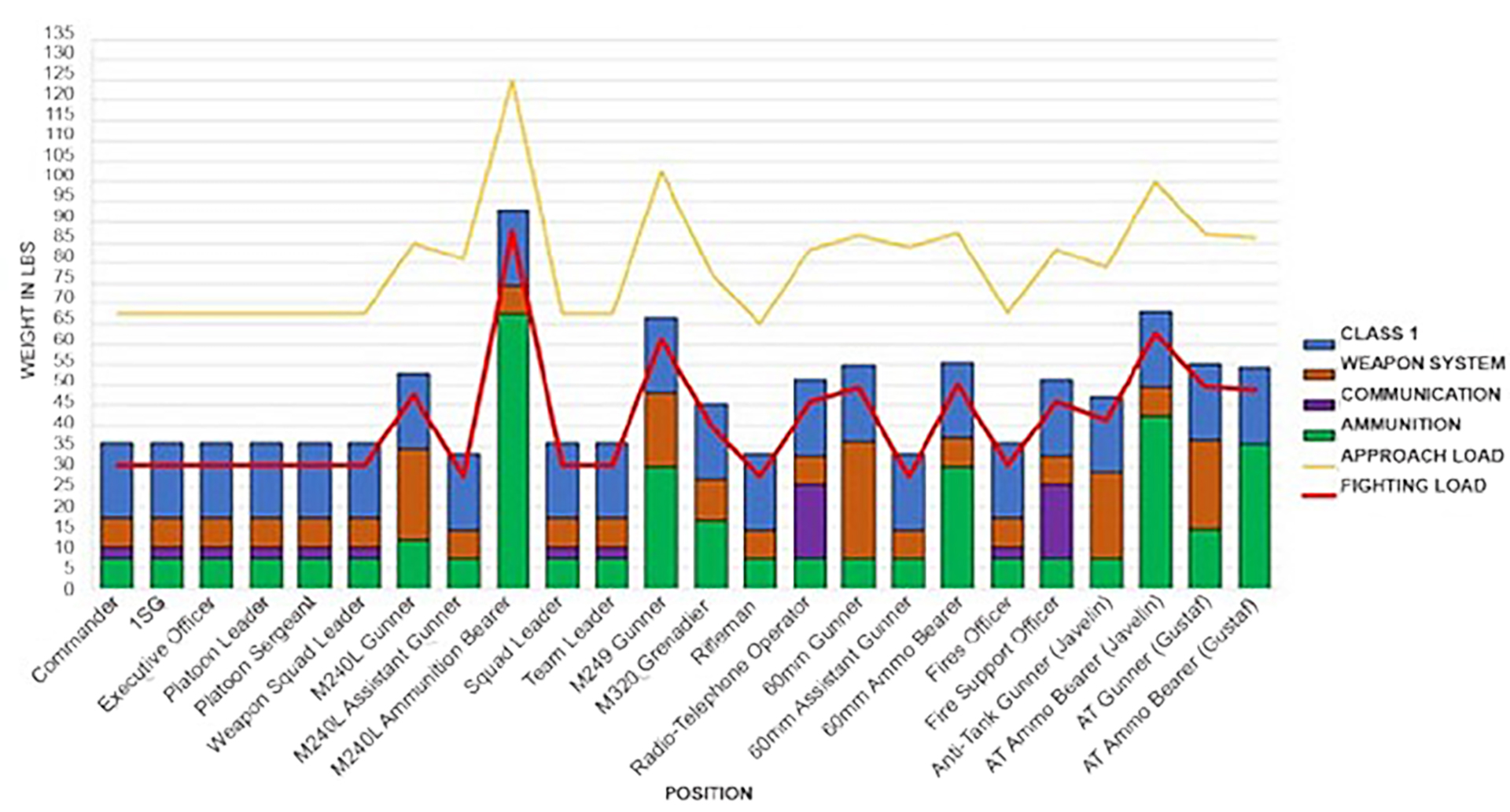
Figure 3 — Analysis of All Weight Carried (including Weapon System) Using 2-30 IN JRTC 23-09
Packing List
| Traditional Special Equipment |
Suggested Lightfighter Special Equipment |
-
Aid and Litter
- - Skedco
- - Aid bag
- - Helicopter landing zone (HLZ) kit
- -OR-
-
Breach
- - Shotgun
- - Wire cutters
- - Hooligan tool
- -OR-
- -Flexcuff
- -Enemy prisoner of war (EPW) tag kit
- -OR-
-
Demo
- - Demolitions
- - Det cord
- - M88 & shock tube
-
Additional items:
|
-
Aid and Litter
- - Skedco
- - Aid bag
- - HLZ kit
- -OR-
-
Breach
- - Shotgun
- - Bayonet
- -OR-
- -Flexcuff
- -EPW tag kit
- -OR-
-
Demo
|
| Traditional Special Equipment |
Suggested Lightfighter Special Equipment |
-
Aid and Litter
- - 2x Skedco
- - 2x Aid bag
- - 2x HLZ kit
-
Breach
- - 2x Shotgun
- - 2x Wire cutters
- - 2x Hooligan tool
- EPW
- - 2x Flexcuff
- - 2x EPW tag kit
-
Demo
- -2x Demolitions
- - 2x Det cord
- - 2x M88 & shock tube
-
Other items:
- - Batteries
- - M249 spare barrels
|
-
Aid and Litter
- - 1x Skedco, 1x Poleless litter
- - 2x Aid bag
- - 1x HLZ kit
-
Breach
- - 1x Wire cutters
- - 1x Bayonet
-
EPW
-
Demo
-
Other items:
|
| Traditional Special Equipment |
Suggested Lightfighter Special Equipment |
-
Aid and Litter
- - 6x Skedco
- - 6x Aid bag
- - 6x HLZ kit
-
Breach
- - 6x Shotgun
- - 6x Wire cutters
- - 6x Hooligan tool
- EPW
- - 6x Flexcuff
- - 6x EPW tag kit
-
Demo
- - 6x Demolitions
- - 6x Det cord
- - 6x M88 & shock tube
-
Other items:
- - Batteries
- - M249 spare barrels
- - 2x Thermal sights for M240
- - 2x Tripod
|
-
Aid and Litter
- - 2x Skedco, 3x Poleless litter
- - 6x Aid bag
- - 1x HLZ kit
-
Breach
- - 1x Shotgun
- - 2x Wire cutters
- - 2x Bayonet
-
EPW
- - 3x Flexcuff
- - 3x EPW tag kit
-
Demo
-
Other items:
- - Batteries
- -2x Thermal sights for M240
- -2x Tripod
|
Soldier load is often inadvertently increased because of
requirements for special equipment at echelon, and leaders
must limit the amount of this equipment to reduce the
amount of weight individuals are carrying. Special equipment
at the team level may be duplicative when operating as a
platoon. For example, wire cutters carried by a team for a
squad patrol should not result in six wire cutters going out
on a platoon-sized patrol. Managing special equipment takes
leader involvement, and Soldier load can be reduced by only
carrying the minimum equipment required for a mission. As
stated previously, junior leaders should feel empowered to
make decisions on what is carried. The uniform should fit
the requirements of the mission. Tables 4-6 specifically look
at special equipment by organizational level and eliminate
redundancy at echelon.
Decisions of what not to carry should be made by informed leaders, even at the team leader level. Even in these
examples, additional changes can be made. For example, machine gunners may not need to carry E-tools, and their
assistant gunners can carry one tool for both of them. Leaders must think intentionally of creative ways to
limit weight.
Training for Soldier Load
When training for long-distance movement, leaders
should not fall into the trap of just carrying heavy loads over
extended distances. Instead, training should replicate patrolling
rather than preparing for an EIB ruck march. Similarly, at
every available opportunity, units should train on dismounted
sustainment. Once a unit goes light, one of the hardest challenges
will be sustaining the dismounted force.
When training for dismounted movements, leaders
should focus on perfecting their movement rates, rates of
march, movement formations, and actions at halts. These
are essential for a dismounted element away from supply
lines.
Controlling the rate of march is vital to ensuring dismounted
Soldiers can sustain tempo when attacking an objective.
Even with the lightest of loads, an uncontrolled rate of march
will fatigue units, making Soldiers combat ineffective. The
rate of march should be controlled by leaders at all levels
and determined in accordance
with the standards set forth in
Army Techniques Publication
3-21.18,Foot Marches.
Understanding halt timelines is also essential. For dismounted infantry movements, units will “halt for 15
minutes during the first hour [of movement] and 10 minutes every 50 minutes thereafter.”6 This pace can be adjusted by leaders at all levels
according to mission requirements. Ensuring halts are executed ensures that Soldiers are not only able to close
short distances but are also able to close long distances over extended periods of time. During the first hour’s
long halt, units should check Soldier equipment and adjust or redistribute it as necessary. During this halt,
and all following halts, Soldiers will maintain security while consuming water and food. Doing this will help
Soldiers maintain energy levels. Leaders will conduct foot checks as required. During halts, the formation will
conduct actions normally associated with long halts, to include establishing hasty sectors of fire, performing
maps check, repositioning casualty-producing weapons (M240), and conducting a hasty emplacement of mortars.
haracteristics similar to that of a patrol base (a site that is easily defendable for short periods of time,
away from natural lines of drift and high-speed avenues of approach, provides cover and concealment from both
ground and air, and provides little to no tactical advantage to the enemy, according to the Ranger
Handbook, Training Circular 3-21.76). Planning should be associated with a movement control measure,
specifically a planned checkpoint, or a phase line.
Movement rates through restrictive terrain should plan for
a light infantry company to move at 2 kilometers per hour
(kph) during the day and 1 kph at night. Although this is a
generally accepted rule, route planning is the largest factor
of a steady rate of march. Keeping Soldier load light helps
Soldiers cross this distance more efficiently. Achieving 20-32
kilometers per day is only possible when Soldier load and
rate of march are combined effectively
Route planning should avoid moving through restrictive
terrain except when the tactical situation requires. Slope,
vegetation, and hydrology should all be taken into consideration
when planning routes. Current computer modeling
shows the impact of terrain on movement speed for a Soldier
moving under 40-pound and 140-pound loads. For light
infantry to utilize restrictive terrain for tactical advantage,
both Soldier load and route planning must be considered.

Figure 4 — Average Dismounted Rates of March (ATP 3-21.18, Figure 3-2)
Figure 5 uses computer models to show the fastest route over specific types of terrain when a 200-pound
individual conducts movement over restrictive terrain. The goal for leaders should be to achieve the yellow
line. This route combines a lighter Soldier load with a shorter and more tactically advantageous route. The
lighter load allows for the dismounted Soldier to better utilize restrictive terrain, thus providing a perceived
tactical advantage.
Movement formations and techniques are of special
consideration for dismounted movements under load. The
wedge and the column remain the fastest formations, with the
wedge maintaining the highest level of security. The modified
column and the column should only be used when the terrain
does not allow for the wedge. Although traveling and traveling
overwatch are considered the fastest movement techniques,
the bounding overwatch formation gives Soldiers a chance
to rest while providing security. Leaders should consider the
bounding overwatch technique to maintain security when
movement must be maintained but Soldiers are showing
signs of fatigue.
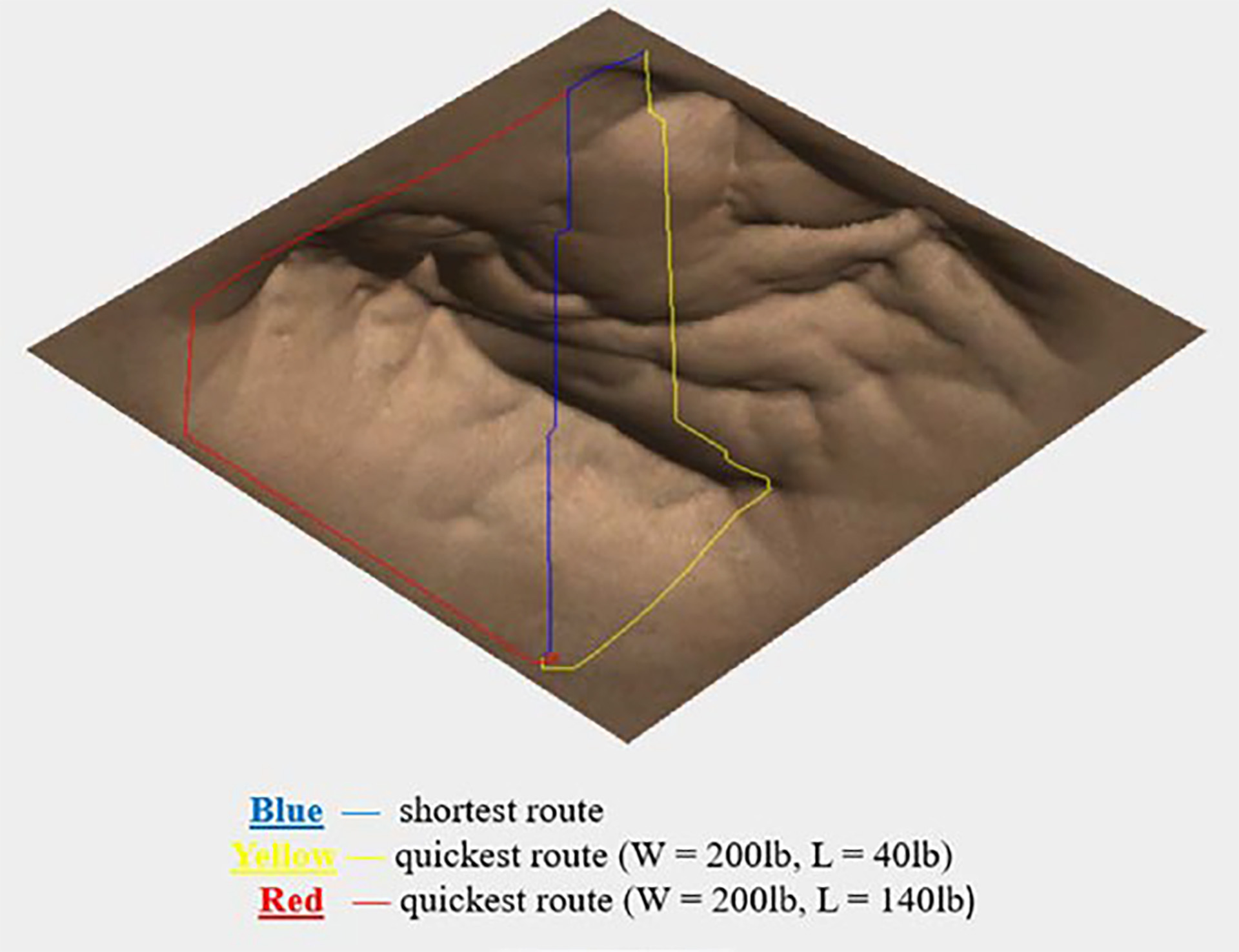
Figure 5 — The Effects of Load on Route Selection7
Dismounted Resupply
Dismounted resupply is one of the most difficult aspects
of operating as light infantry. It involves the transfer of
equipment from a logistical element to the dismounted
fighting Soldier. A vehicle cannot simply move right up to
a dismounted location. It takes planning, and the transfer
from a vehicular or air platform to a dismounted resupply
team must be rehearsed. “Fundamentally, only two great
novelties have come out of recent warfare. They are: (1)
mechanical vehicles, which relieve the Soldier of equipment
hitherto carried by him; (2) air supply, which relieves the
vehicle of the road.”8 Resupply is
essential to “lightfighting.”
Without sustained water, food, and ammunition, light infantry
units cannot operate for extended periods of time. To
remain resupplied, light infantry units should remain innovative,
adaptable, and disciplined. There are multiple ways
to resupply dismounted infantry units, including the use of
company trains, a dismounted duty platoon, speedballs,
caches, and aviation elements.
Company trains remain the main method of
resupply for company-level and below dismounted
movements. As a planning factor, company trains
should remain at least one terrain feature away from
combat formations and out of direct fire contact. In
a light infantry formation, the company trains may
only consist of two vehicles: the commander’s High
Mobility Multipurpose Wheeled Vehicle (HMMWV)
and the company Light Medium Tactical Vehicle
(LMTV). When operating in restrictive terrain, the
company all-terrain vehicle may also be utilized to
transport equipment between the location of the
LMTV and the company patrol base. The company
executive officer (XO) oversees resupply as the first
sergeant moves with the formation. This is not a
rigid requirement but a planning consideration that
leaders can adjust.
Dismounted resupply is the only organic method
that can traverse through restrictive terrain. The
company patrol base is usually located in restrictive
terrain where the LMTV cannot conduct tailgate
resupply. Companies should designate a platoon to conduct
resupply operations. The first sergeant is responsible for
conducting resupply from the trains forward to the company.
As previously mentioned, duty platoons with the right equipment
can assist with resupply. This will require one platoon
to reduce the amount of personal equipment its Soldiers are
carrying in order to carry supplies (especially Class I, III, and
IV). This allows a dismounted element to move forward without
bringing up company trains. The increased load of these
classes of supplies, however, fatigues the troops assigned
with this duty and may make them combat ineffective for the
current operation.
Speedballs are a colloquial term used to describe prepackaged
resupply bundles. These supplies are meant to quickly
resupply at the point of need and usually consist of Class I,
II, III, IV, and V. In contact, Class I and V will be the most
emergent needs. These items are packaged in duffle bags
or body bags and pre-staged at the brigade support area.
During mission planning, the battalion S-4 should coordinate
between the companies and the forward support company
to configure these items. Also key to using speedballs is the
need to track their location so they can be loaded onto waiting
trucks or aircraft. The battalion XO or commander is usually
the release authority for sending speedballs forward to troops.
Caches are another form of resupply not commonly used. “Caching is the process of hiding equipment or materials
in a secure storage place with the view to future recovery for operational use.”9 Caches are another way to lighten Soldier load and
require prepositioned supplies to be staged forward. The key element of a cache is that the supplies are left
hidden and unsecured until the receiving unit secures them. In order to properly cache an item, two elements —
the placing unit and the receiving unit — are tasked to conduct the caches. The placing unit could be a scout
element, an aviation element dropping supplies, or a vehicle trailer that was placed in the woods. The receiving
element is usually larger and unable to resupply internally. The danger with caches is that an enemy element
could find the cache and either take the supplies or ambush friendly forces when they come to retrieve the
supplies. Key to the cache is properly marking the location, communicating this location to a higher element,
camouflaging the equipment, and taking steps (like deception) to ensure enemy forces do not find the location.
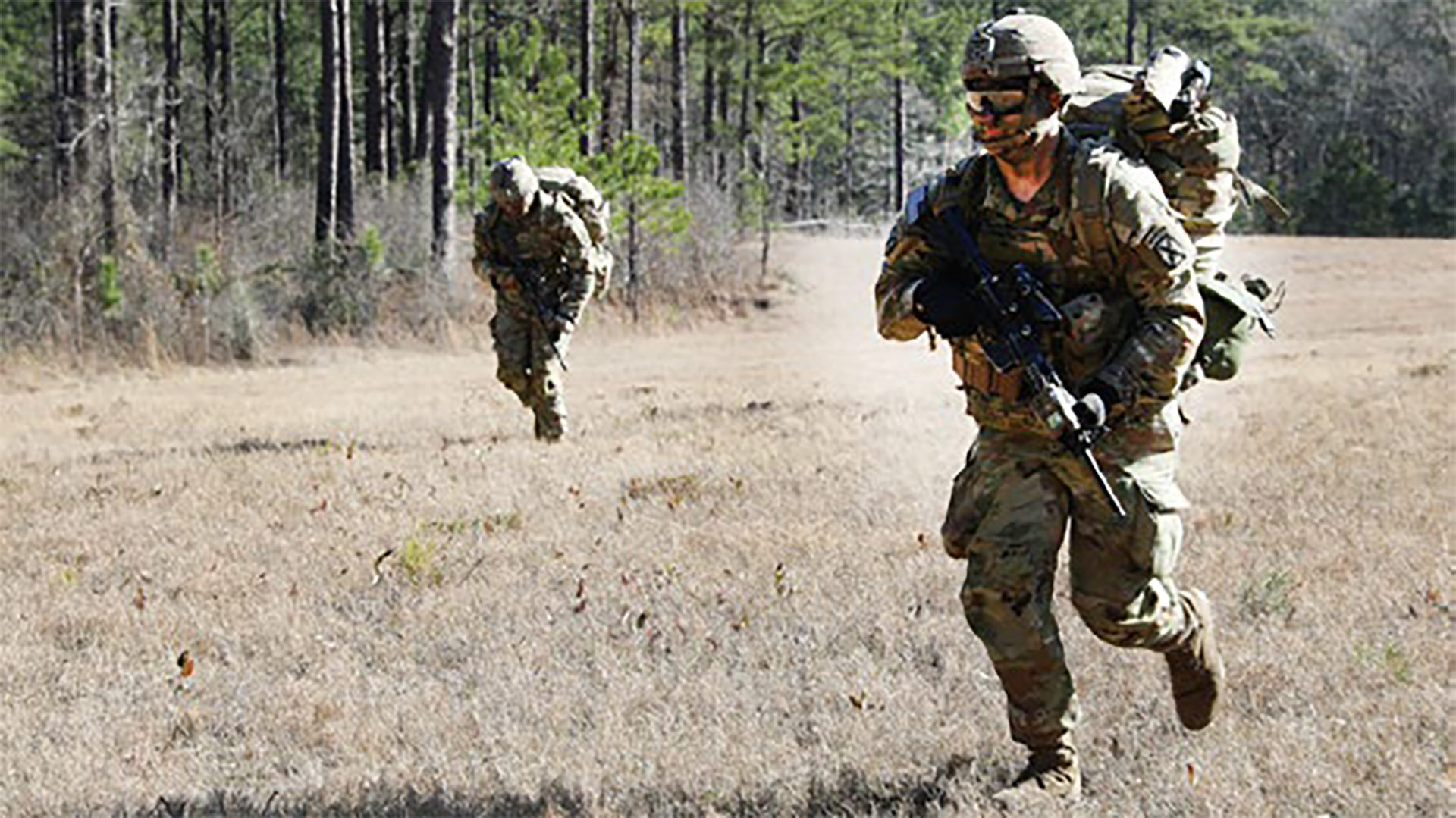
Soldiers in 2-30 IN move to Peason Ridge training area to conduct situational training
exercises at Fort Johnson, LA, in January 2023. (Photo courtesy of 3rd Brigade Combat Team, 10th Mountain
Division)
Aviation elements have a unique advantage in conducting
resupply operations. For a dismounted resupply, there are
two main types of resupply conducted by aviation elements.
Low-cost, low-altitude (LCLA) resupply involves dropping
supplies from a rotary-wing or fixed-wing aircraft. LCLA
requires coordination between the battalion and the aviation
element. This requires pre-coordination to ensure that
the resupply takes place in a timely manner. Units may also
require a jumpmaster and pathfinder to assist the aviation
element in dropping supplies. There are two main challenges
of LCLA. First, while preplanned LCLA drops are an effective
way to conduct resupply, LCLA is not especially flexible to the
needs of “lightfighters.” Second, parachutes do not always
land where planned. A resupply package drifting off course
can increase the amount of time before the resupply and risk
being compromised by the enemy.
Sling loads are resupply packages moved underneath
rotary-wing assets. UH-60s and CH-47s can sling various
packages across all classes of supply. Sling loads are reliable
and can place supplies in an accurate location. The drawbacks
of sling loads are the equipment required to sling and the
shortage of trained personnel to rig resupply. Again, it takes
practice to get crews proficient in rigging resupply bundles. An
additional drawback is that rotary-wing assets can give away
positions if drop locations are not properly planned.
Finally, water resupply is the most pressing need for a
dismounted rifle company, especially during warm weather.
There are several ways to conduct water resupply, but all
come at a cost. Water purification, if acceptable at a
unit’s location, can solve this problem, but purifying
water takes time, requiring a unit to stop movement.
Purification tablets are also an option, but these may not
filter out heavy metals and all toxins, and again, are one
more item a Soldier must carry. Each rifle company has
a 400-gallon water “buffalo” capable of resupplying a
rifle company. However, this also needs to be rehearsed.
Even for a well-rehearsed company, resupplying callbacks,
or water gallons, can take more than an hour.
Conclusion
Soldier load is not a simple problem that can be easily
solved or viewed as merely weight and distance. Army
leaders must understand the risk in overloading Infantry
Soldiers. The asymmetric advantage of light infantry
is the ability to move through restrictive terrain to gain
a decisive advantage over the enemy. This mobility
gives them the ability to capitalize on the principles of
the offense, specifically surprise and audacity. Without
managing Soldier load, a light infantry formation loses all
principles of the offense, and this adversely impacts tempo
and increases risk to the force and mission. In short, a lighter
force is a more lethal force. We have to rethink how we view
Soldier loads and must look at approach and fighting loads
in a different light. Managing Soldier load must be done by
adhering to the packing list, understanding the compounding
impacts of adding weight requirements at echelon, ensuring
that rate of march supports Soldier load efforts, and conducting
efficient dismounted resupply. This is a leader business,
and the success of America’s fighting Soldiers depends on
maintaining the “lightfighter” mindset.
Endnotes
1.
Lauren Fish and Paul Scharre, “The Soldier’s Heavy Load,” Center for a New American Security (En-US), www.cnas.org/publications/reports/thesoldiers-heavy-load-1.
2.
Joseph J. Knapik, Katy L. Reynolds, and Everett Harman, “Soldier Load Carriage: Historical, Physiological,
Biomechanical, and Medical Aspects,” Military Medicine, January 2004, https://pubmed.ncbi.nlm.nih.gov/14964502/.
3.
Ibid.
4.
Fish and Scharre, “The Soldier’s Heavy Load.”
5.
Ibid.
6.
Army Techniques Publication 3-21.18, Foot Marches, April 2022.
7.
Jeremiah M. Sasala, “Individual Soldier Loads and The Effects on Combat Performance,” (Thesis, Naval Postgraduate School, 2018), https://apps.dtic.mil/sti/pdfs/AD1060058.pdf.
8.
S.L.A. Marshall, The Soldier's Load and the Mobility of a Nation (Quantico, VA: The Marine Corps Association, 1950).
9.
Training Circular 31-29, Special Forces Caching Techniques (discontinued).
Author
LTC Aaron Childers, an Infantry officer, is currently the G-3 for the 10th Mountain
Division. He previously commanded 2nd Battalion, 30th Infantry Regiment, 3rd Brigade Combat Team, 10th
Mountain Division, Fort Johnson, LA. His previous assignments include serving with the 82nd Airborne
Division, 1st Cavalry Division, 101st Airborne Division (Air Assault), the Joint Staff, and the Army Staff.
He is also a member of the Military Writers Guild.
CSM Joshua Yost currently serves as the command sergeant major
of 2-30 IN. His previous assignments include serving with the 75th Ranger
Regiment, 2nd Infantry Division, Ranger Training Brigade, 25th Infantry
Division, Asymmetric Warfare Group, and U.S. Army Japan.